Our National Monuments back cover
No Comments
The front cover of Our National Monuments features a photograph from Ironwood Forest National Monument located in Southern Arizona made with a super-telephoto lens. The twenty-two land national monuments in the book have fewer geographic diversity than the national parks. Within that range of possibilities, I chose an image as different as possible for the back cover. By contrast with the Sonoran Desert, Cascade-Siskiyou in Oregon is the lushest of the twenty-two monuments, and the image was photographed with a super wide-angle lens. Instead of filling the back cover with marketing copy, I felt it would be more appropriate for an art book to print a photograph with no text besides the indispensable barcode:
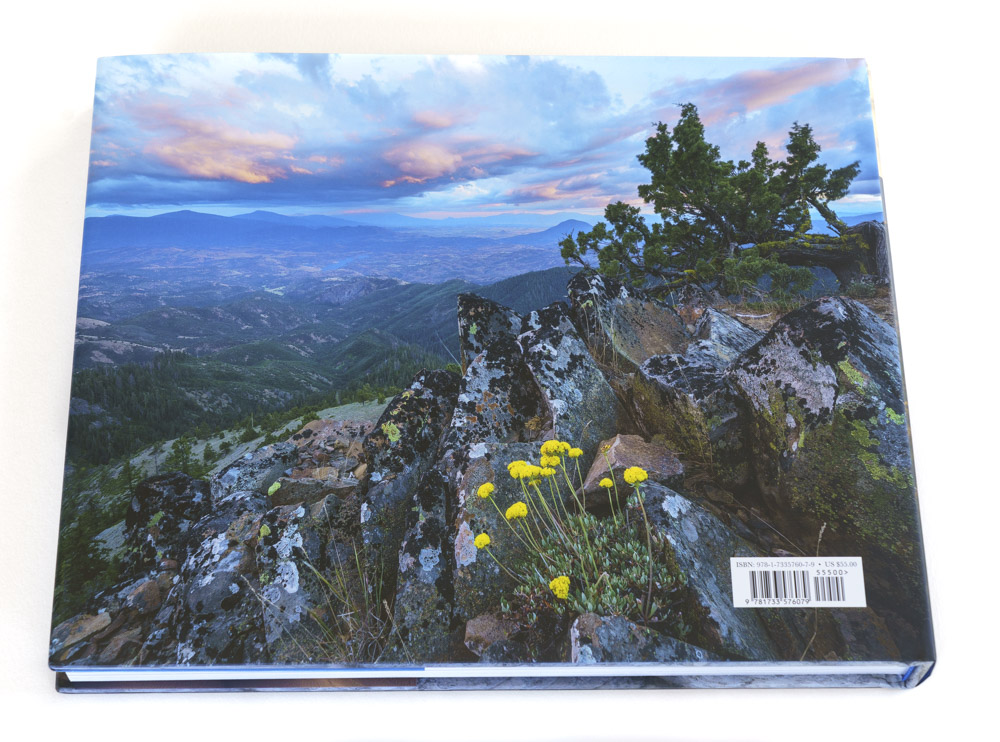
I had traveled by myself for most of the national monuments project, except on three occasions. Cascade-Siskiyou was one of them, as Ashland-based noted photographer and educator Sean Bagshaw went hiking with me. Although it was late June, the afternoon temperatures were unseasonably cold. Once we got on the ridge of Boccard Point (trail directions) the steady wind cooled us further. I could see that Sean was feeling the chill, so I appreciated very much that he was willing to hang out until sunset, even though as someone who lives barely more than a dozen miles away he could come back at any time. There was still quite a bit of time before total darkness, but I decided to wrap it up quickly. I set up for one of the last photographs of the day.
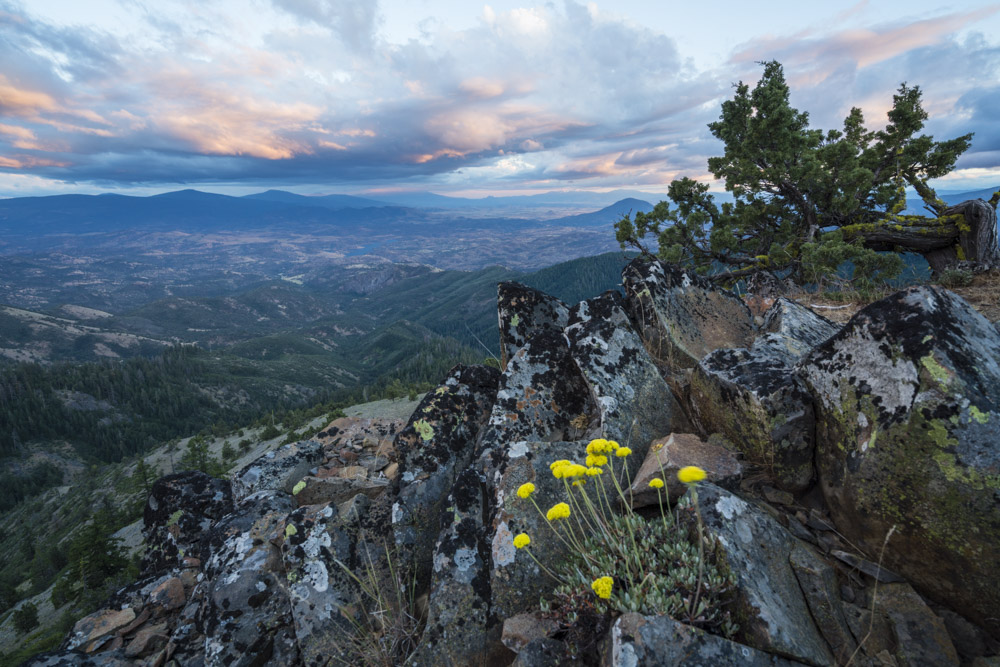
f/11
The last rays were coloring the clouds with the sun had already below the horizon. They were covering much of the sky, so it was quite dark. The bright yellow flowers added a bright counterpoint to the generally cool tones. The problem is that the stiff wind caused them to move constantly. A lull would not come soon, and the color was quickly vanishing from the clouds. I needed an aperture of f/11 to get both the flowers and the background in focus, but it resulted in a shutter speed that was too slow to freeze the motion of the flowers. In a field of wildflowers, a few blurred flowers can add dynamism to an image, but here, with so few flowers, each such a focal point, I felt their blurriness to be a distraction.
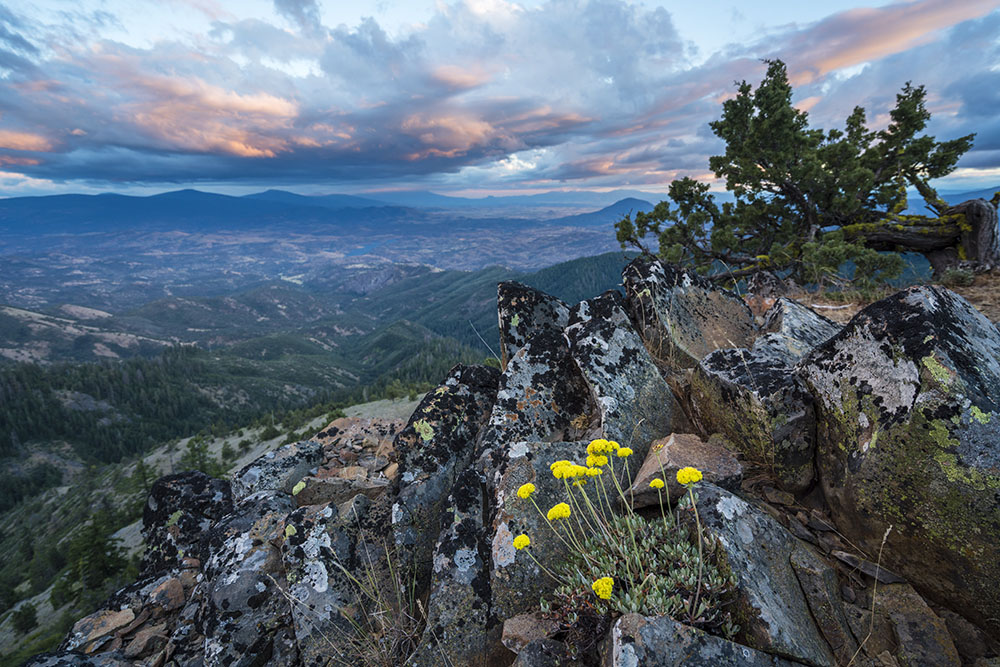
f/5.6
I could have increased ISO, but that would have resulted in a less detailed image. I could also have made an image with a slightly out-of-focus background at a wider aperture and higher shutter speed (above). Compare the difference in the following 50% detail view – you can click to enlarge.
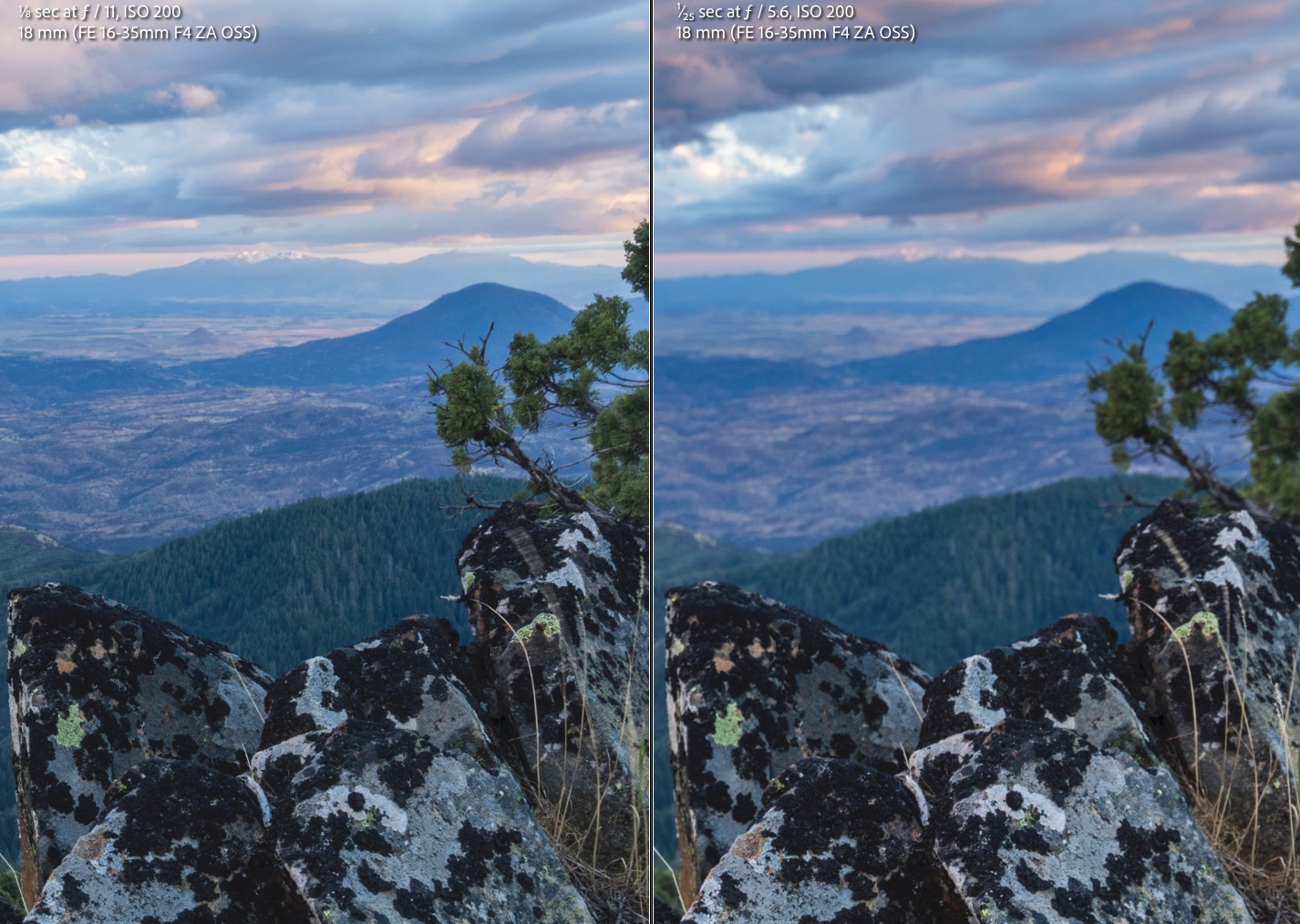
Instead, I aimed to create a flawless image with a little help from digital tools. My solution was a focus stack with a wider aperture. Although not a single exposure, I feel the photograph remains true to the scene, standing for an image that a high-quality, high-ISO camera would have captured in a single exposure.
![]()
Focus stacked with Helicon
I made two exposures, one focused on infinity and the other on the flowers, with the intention of blending them. For the first one, I stopped down the lens to its best-performing aperture, f/8. For the second one, I used f/5.6 that resulted in a shutter speed of 1/25s, fast enough to render the flowers sharply. Usually, the specialized Helicon Focus software produces better results than Photoshop’s focus blending, but not in this case.
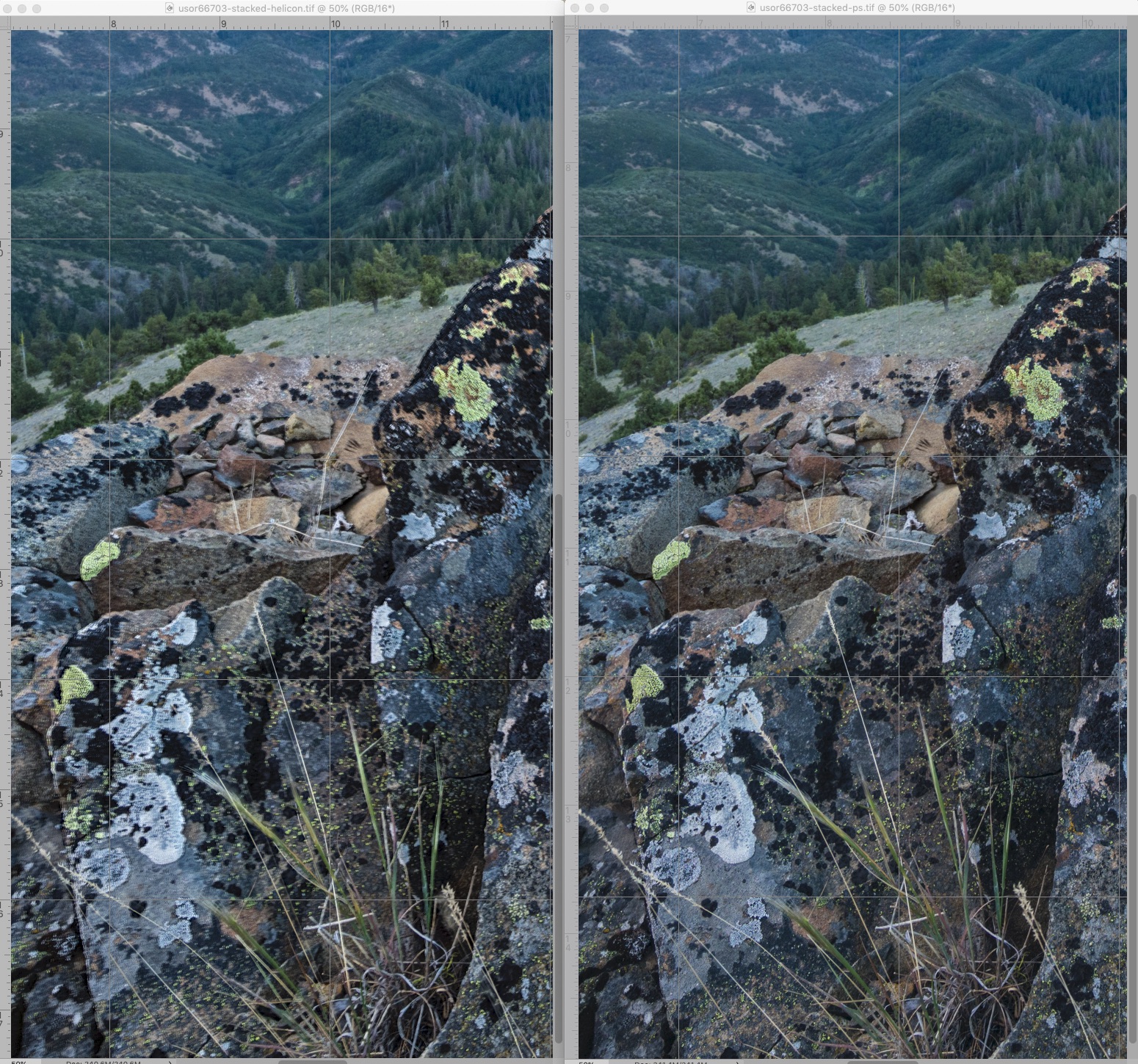
There was significant ghosting in the foreground, as can be seen in this the detail view above – you can click to enlarge.
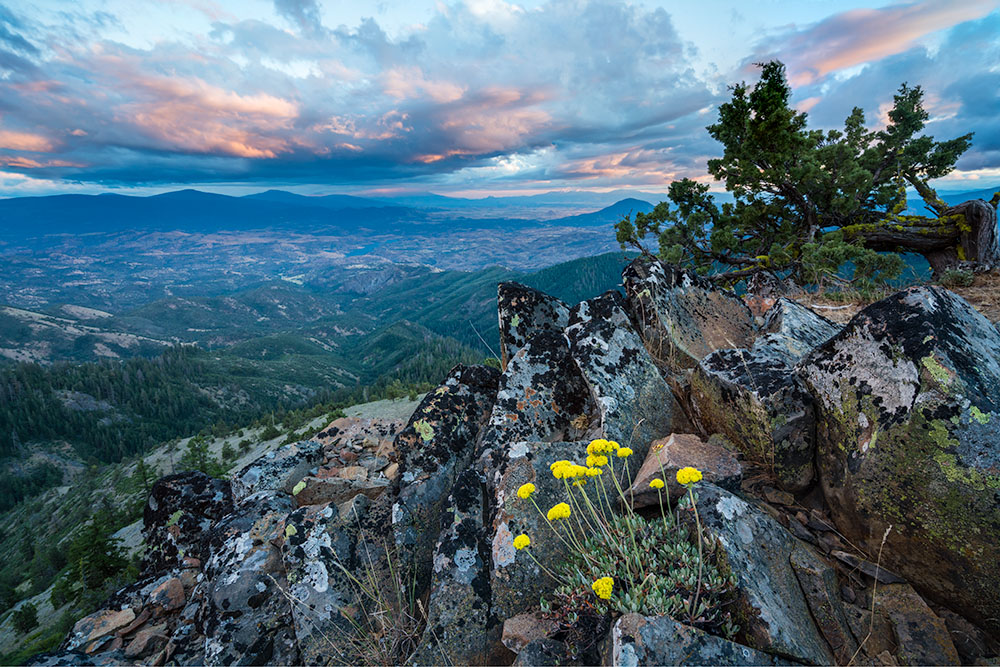
Focus stacked with Photoshop
Photoshop rendered an image that looked better. When reviewed on-screen, it passed my initial scrutiny. I have often found that details easily missed on a screen jump at me on prints – resulting in much-wasted paper. I hadn’t printed that image, and when the proofs came back, I immediately noticed the artifacts in the top right corner resulting from the wind blowing the tree branches to two different positions between the two frames. The highest branch exhibited ghosting. To fix the problem, instead of relying on software, I blended the two frames manually, loading them in layers and adjusting their visibility with the brush tool.
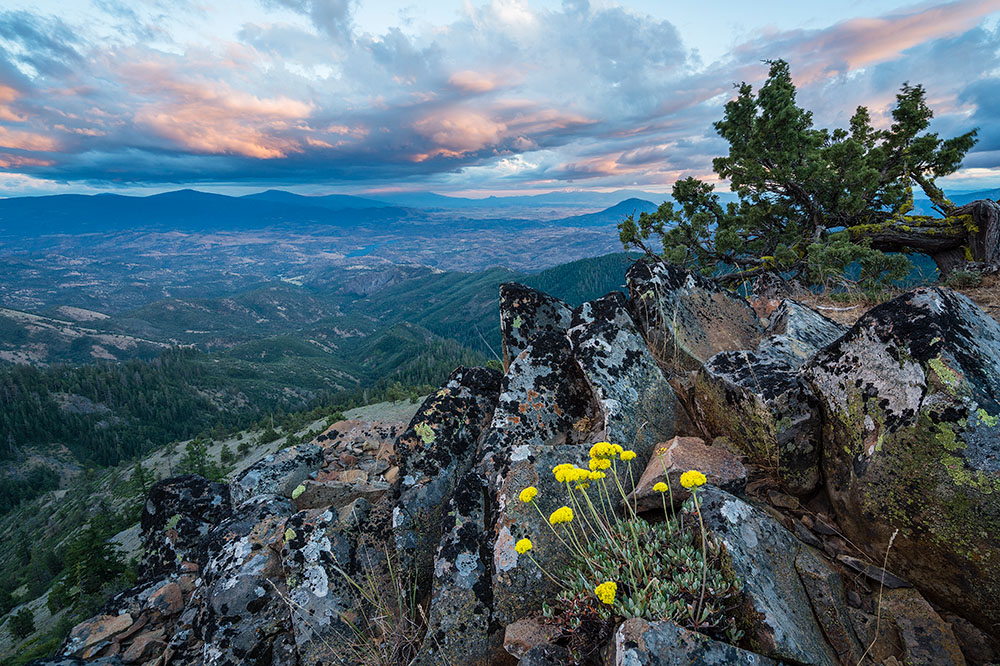
Focus stacked manually
The differences are hardly noticeable when viewed on the internet and even less so on a quickly scrolled social media post. I suspect all the single-frame approaches with high ISO or f/5.6 would have resulted in an image acceptable for most viewers. However, to an attentive reader, not to mention a photographer, the defects would be apparent even at the relatively small print size of a 10×12 book page of Our National Monuments. With the hope that my images can hold and reward attention, I strived for better craft. You never know what an image may be used for.

